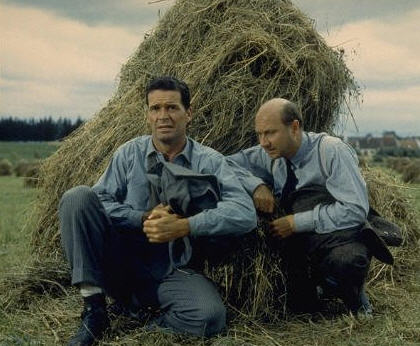Archive Review: The Great Escape (1963)
As far as war films go, “The Great Escape” doesn’t rank in the most dramatic or the most eye-opening. It doesn’t even make the list of World War II epics with the most compelling characters. It’s a movie with that intangible “it” factor that only comes from an impressive story. Films such as this one that are based on true events and real-life people (many of whom were acted by people with similar war experience), are the reason so many “based on a true story” movies have been made over the years.
“The Great Escape” will have its skeptics because director John Sturges’ approach to the film emphasizes suspense ahead of character development, which usually characterizes fiction. With a background in Westerns, Sturges knows how to build up to and then milk the climactic scenes. The reason the final hour with the prisoners escaping is so good is because it took nearly two hours to get there. It certainly didn’t help the film’s credibility to have Steve McQueen demanding to “do more” in the film and insist on riding a motorcycle, but many remember “The Great Escape” for this reason.
The true elements of the story come from an actual escape attempt by Allied POWs from a German stalag. Paul Brickhill, who wrote the book upon which the film is based, actually assisted in planning a tunneling effort. That should put to rest any questions about the film’s validity. Undoubtedly characters were created by mashing together multiple real-life persons and their fates did not match exactly what happened to them in reality (who could know?), but this was no cheap Hollywood attempt to exploit a terrific true story. After all, the ending is certainly more akin to a war drama than entertaining historical fiction.
Sturges calls upon many of the stars from “The Magnificent Seven” (released three years before this one) to assist him in this film: Steve McQueen as the leader figure notorious for getting in trouble and ending up in “the cooler” or isolation, Charles Bronson as Danny the lead tunneler who ironically is claustrophobic and James Coburn as Louis “The Manufacturer.” Other notable stars are acclaimed actor/director Richard Attenborough, future James Bond villain Donald Pleasence and James Garner. What their characters lack in depth written into the script, these fine actors inject back into their roles as best they can.
“The Great Escape” takes a bit too long to get to the climax so clearly spelled out by the title, but the wait is worth it. The first hour and a half to two hours plays out as a series of episodes showing the preparations and the characters behind them, some more effective than others, but the movie earns its place in war film history with the final act. As these characters flee the prison, you start to realize how much you do indeed care about what happens to them.
There’s so much suspense inherent in the story and written into the script that a dramatically adept director could’ve made “The Great Escape” a monumental film, but thrilling and unique are acceptable adjectives when all is said and done, even if they could have been arrived at a tad bit quicker. After all, much of what there is to marvel at this film about has to do with its fascinatingly true story.
—
4/5 Stars
—
The Great Escape (1963)
Directed by John Struges
Written by James Clavell and W.R. Burnett, Paul Brickhill (book)
Starring: Steve McQueen, James Garner, James Coburn, Charles Bronson





1 Comment
Where was this scene filmed. Have a look at my FUSSEN page on the http://www.thegreatescapelocations.com website for details…………
I’m trying to locate the church in the background of the Hay Bale scene with James Garner and Donald Pleasence please.
Don